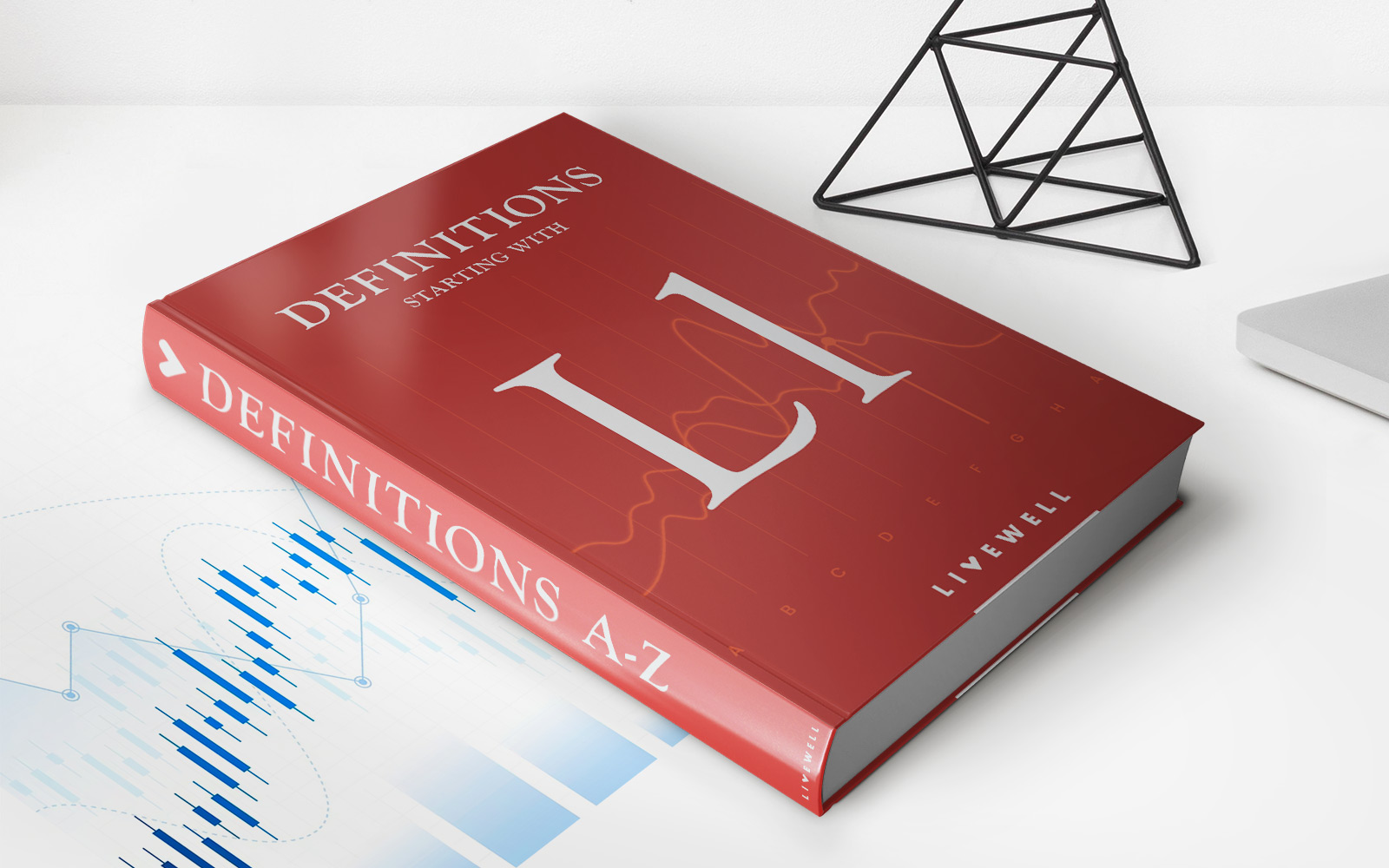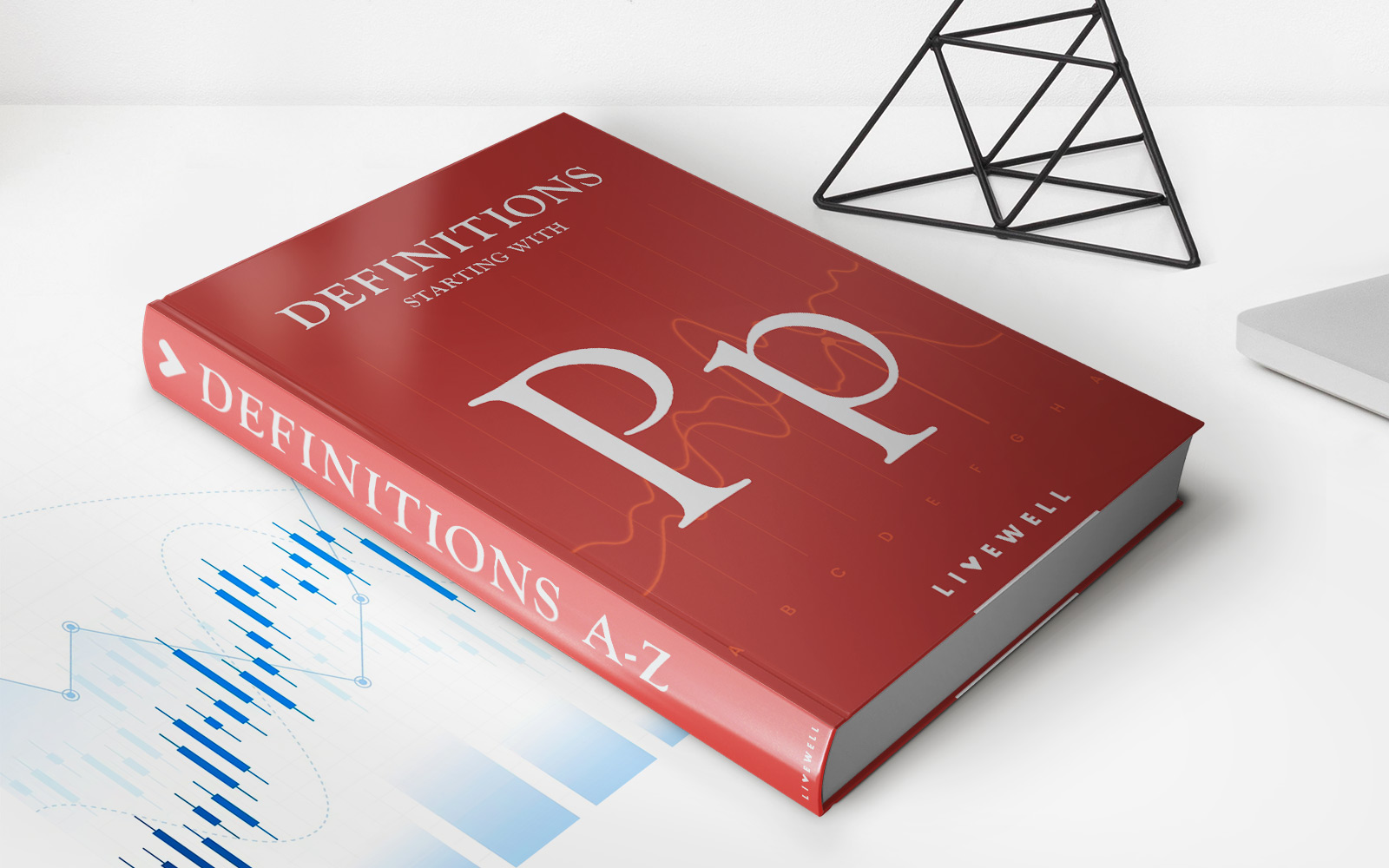Home>Finance>Why Do Public Utilities Use Differnent Capital Structure


Finance
Why Do Public Utilities Use Differnent Capital Structure
Published: December 25, 2023
Discover why public utilities employ diverse capital structures in their financial operations. Gain insights into the finance strategies of utility companies.
(Many of the links in this article redirect to a specific reviewed product. Your purchase of these products through affiliate links helps to generate commission for LiveWell, at no extra cost. Learn more)
Table of Contents
- Introduction
- Definition of Capital Structure
- Importance of Capital Structure for Public Utilities
- Factors Influencing Capital Structure Choices
- Regulation and Capital Structure
- Case Studies: Capital Structure of Public Utilities
- Comparative Analysis of Public Utilities’ Capital Structures
- Benefits and Drawbacks of Different Capital Structures
- Conclusion
Introduction
Capital structure refers to the way in which a company finances its operations through a combination of debt and equity. It is a crucial aspect of financial management that determines the overall financial health and stability of a company. Public utilities, which provide essential services such as water, electricity, and telecommunications, also make strategic decisions regarding their capital structure.
The capital structure of public utilities plays a pivotal role in their ability to meet the demands of customers, maintain infrastructure, and invest in technological advancements. It directly impacts the cost of operations, profitability, and long-term viability of these companies. Therefore, understanding why public utilities use different capital structures is of great interest and importance.
Public utilities operate in unique environments, often facing regulatory constraints, political influences, and a need for long-term investment planning. These factors, coupled with the nature of the services they provide, require public utilities to carefully consider their capital structure choices. By striking a balance between debt and equity, public utilities aim to optimize their financial performance and ensure the continued provision of affordable and reliable services to consumers.
In this article, we will explore the reasons why public utilities utilize different capital structures and the factors that influence their decisions. We will also delve into the regulatory considerations that shape the capital structure choices for public utilities. Furthermore, we will examine real-life case studies to understand the capital structure dynamics of public utilities in various contexts.
By analyzing the comparative analysis of public utilities’ capital structures, we can assess the benefits and drawbacks of different approaches. This knowledge can be valuable to investors, regulators, and industry professionals in gaining insights into the financial stability of public utilities and their ability to meet future challenges.
Now, let’s delve into the world of capital structure and explore why public utilities adopt different financial strategies to navigate their unique operating landscapes.
Definition of Capital Structure
Before diving into the reasons behind public utilities’ adoption of different capital structures, it is essential to have a clear understanding of what capital structure entails.
Capital structure refers to the composition of a company’s financial resources, including the proportion of debt and equity used to finance its operations and investments. It represents the way in which a company decides to raise funds to support its growth and manage its financial obligations.
Debt financing involves borrowing money from external sources, such as banks or bondholders, which creates an obligation for the company to repay the borrowed amount with interest over a defined period. Equity financing, on the other hand, involves selling shares of ownership in the company to investors who become shareholders and have a claim on the company’s assets and profits.
The capital structure of a company is typically represented by a ratio comparing debt to equity. For example, a company with a capital structure of 70:30 indicates that it has financed its operations with 70% debt and 30% equity.
The decision on the optimal capital structure depends on various factors, such as the company’s risk appetite, cost of borrowing, profitability, and market conditions. Striking the right balance between debt and equity is crucial to ensure the company’s financial stability and flexibility in the long run.
It is important to note that capital structure is not a static concept and can evolve over time. Companies may adjust their capital structure based on changing market conditions, business strategies, and financial goals.
For public utilities, which are responsible for providing essential services to the public, capital structure decisions play a vital role in ensuring their ability to meet customer demands and maintain infrastructure. These decisions are influenced by various factors that we will explore in the following sections of this article.
Importance of Capital Structure for Public Utilities
The capital structure of public utilities holds significant importance as it directly impacts their ability to fulfill their role as providers of essential services. Here are some key reasons why capital structure is crucial for public utilities:
1. Cost of Capital: The capital structure of public utilities influences their cost of capital, which is the cost of both debt and equity financing. This, in turn, affects the overall cost to operate and maintain infrastructure. By optimizing the capital structure, public utilities can minimize their cost of capital and enhance their financial performance.
2. Investment and Infrastructure Development: Public utilities require substantial investments in infrastructure to meet the growing demands of customers and ensure service reliability. The ability to raise capital through appropriate debt and equity financing enables public utilities to fund these capital-intensive projects and modernize their systems.
3. Regulatory Compliance: Public utilities operate under regulatory frameworks that determine their pricing, service quality standards, and investment requirements. The capital structure of public utilities can influence their ability to comply with these regulations, as well as their capacity to attract investment and maintain financial stability.
4. Long-Term Financial Stability: Public utilities have a long-term horizon in terms of planning and investment. A well-thought-out capital structure helps ensure financial stability for the utility, allowing it to meet future challenges and adapt to changing market conditions while maintaining service affordability for customers.
5. Flexibility and Resilience: Maintaining an optimal capital structure provides public utilities with the flexibility to adapt to unforeseen circumstances and economic fluctuations. It allows them to manage their debt obligations, access financing when needed, and better withstand potential financial risks.
6. Investor Confidence: The capital structure of a public utility can influence investor confidence in the company. A well-structured capital base, with balanced debt and equity, can attract both debt and equity investors, providing the utility with access to diverse sources of capital and supporting its growth strategies.
7. Sustainable Growth: By maintaining a suitable capital structure, public utilities can support sustainable growth and efficiently allocate resources. This includes investing in renewable energy sources, upgrading infrastructure to reduce environmental impacts, and promoting energy conservation initiatives.
Considering the critical role that public utilities play in society, striking the right balance in their capital structure is essential. The decision on capital structure requires careful consideration of the unique characteristics of the utility, the regulatory landscape, and the long-term financial needs to ensure the sustainability and reliability of essential services for the community.
Factors Influencing Capital Structure Choices
When it comes to capital structure choices, public utilities must take into account various factors that influence their decision-making process. Here are some key factors that play a role in shaping the capital structure choices of public utilities:
1. Regulatory Environment: The regulatory environment in which public utilities operate has a significant impact on their capital structure choices. Regulatory bodies often set guidelines and restrictions on the amount of debt that utilities can incur and the rate of return they can earn. These regulations aim to strike a balance between ensuring financial stability and protecting consumer interests.
2. Cost of Financing: The cost of debt and equity financing can significantly influence a public utility’s capital structure choices. Utilities consider the interest rates associated with taking on debt as well as the cost of equity financing, such as dividends and potential dilution of ownership. They aim to minimize their overall cost of capital while maintaining financial stability.
3. Cash Flow and Earnings Stability: The cash flow and earnings stability of a public utility are important considerations in determining the optimal capital structure. Utilities with predictable and stable cash flows may be more willing to take on higher levels of debt, while those with volatile cash flows may opt for a more conservative capital structure to mitigate financial risks.
4. Asset Base and Collateral: The types and value of assets owned by a public utility can influence capital structure choices. Utilities with substantial tangible assets, such as power plants or pipelines, may have the ability to use these assets as collateral for securing loans, allowing for higher debt levels in their capital structure.
5. Market Conditions: The state of the financial markets and the availability of financing options can influence capital structure choices. Public utilities may adjust their capital structure based on market conditions, such as interest rate fluctuations or changes in investor sentiment, to ensure they have access to affordable financing.
6. Growth Opportunities: The growth prospects and investment opportunities available to a public utility can impact its capital structure choices. Utilities with significant growth potential may opt for a more aggressive capital structure to finance expansion plans, while those with limited growth opportunities may choose a more conservative approach.
7. Risk Tolerance: Each public utility has its own risk tolerance level based on factors such as its financial stability, market position, and regulatory environment. Utilities with a higher risk tolerance may be more willing to take on higher levels of debt, while those with lower risk tolerance may prioritize financial stability and opt for a more conservative capital structure.
It is important to note that the balance between debt and equity in the capital structure of a public utility is a dynamic process that may be adjusted over time based on changes in these influencing factors. Public utilities must carefully analyze these factors to make informed decisions that align with their financial objectives, regulatory constraints, and long-term sustainability.
Regulation and Capital Structure
Regulation plays a crucial role in shaping the capital structure of public utilities. The unique nature of the services they provide, coupled with the need to protect consumer interests and ensure financial stability, leads to specific regulatory frameworks that influence capital structure choices. Here are some key aspects to consider regarding regulation and capital structure:
1. Debt-to-Equity Ratio Restrictions: Regulatory bodies often impose restrictions on the debt-to-equity ratio that public utilities can maintain. These restrictions aim to ensure that utilities do not become overly leveraged and maintain a healthy financial position. By setting limits on the amount of debt utilities can incur, regulators mitigate potential financial risks and protect consumer interests.
2. Rate of Return Regulation: Public utilities are typically subject to rate of return regulation, which determines the maximum return they can earn on their investments. This regulatory mechanism affects capital structure choices, as utilities must consider the cost of debt and equity financing in relation to the allowed rate of return to maintain profitability and attract investment.
3. Asset Valuation and Depreciation: The valuation of assets and the depreciation methods mandated by regulators impact the financial statements of public utilities. These factors influence the utility’s ability to generate cash flow and determine the extent to which debt financing can be supported. Regulators often prescribe guidelines for asset valuation, which, in turn, affect the debt capacity and capital structure choices of public utilities.
4. Long-Term Planning and Capital Investment: Regulators require public utilities to engage in long-term planning, including capital investment plans, which can influence their capital structure decisions. Utilities must seek regulatory approval for major investments and demonstrate that their capital structure can support the financing requirements of these projects. Regulators assess the financial viability and impact of the proposed capital investments before granting approval.
5. Consumer Affordability: One of the primary objectives of regulation in the public utility sector is to ensure that services remain affordable for consumers. Regulators may consider the impact of capital structure choices on customer rates and affordability when evaluating utility proposals and rate structures. Thus, public utilities must strike a balance between financial stability and maintaining reasonable consumer rates.
6. Risk Mitigation and Financial Stability: Regulatory frameworks often prioritize risk mitigation and financial stability in the public utility sector. To ensure the continuity of essential services, regulators may impose specific requirements regarding capital structure choices and debt capacity. By setting guidelines and monitoring the financial health of utilities, regulators aim to protect the interests of stakeholders and ensure the long-term sustainability of public utilities.
Public utilities operate within these regulatory frameworks, which influence their capital structure choices. By working in partnership with regulators, utilities strive to achieve a balance between financial stability, investment in infrastructure, consumer affordability, and adherence to regulatory guidelines. This collaboration ensures that public utilities can fulfill their mandate of providing reliable and affordable services to the community while maintaining a financially sustainable position.
Case Studies: Capital Structure of Public Utilities
Examining real-life case studies can provide valuable insights into the capital structure choices made by public utilities in different contexts. Here are a few case studies highlighting the capital structure dynamics of public utilities:
1. Case Study: Electric Power Company A
Electric Power Company A operates in a region with a highly regulated utility sector. Due to the regulatory constraints, the company has a relatively conservative capital structure, with a higher proportion of equity financing. The regulated rate of return allows the company to attract equity investors, ensuring a stable funding source. The company’s focus on long-term planning and infrastructure investment aligns with the regulatory requirements, ensuring a balance between financial stability and service reliability.
2. Case Study: Water Utility B
Water Utility B operates in a highly fragmented market and faces unpredictable revenue streams due to fluctuations in water demand. As a result, the utility maintains a more conservative debt-to-equity ratio to mitigate financial risks. It relies on a mix of internal cash flows and limited debt financing to fund capital investments. The regulatory framework in this market promotes financial prudence and emphasizes the need for cash reserves to handle infrastructure emergencies and ensure the long-term sustainability of water supply services.
3. Case Study: Telecommunications Company C
Telecommunications Company C operates in a highly competitive market with rapidly evolving technology and infrastructure requirements. To finance its extensive network expansions and upgrades, the company employs a higher level of debt in its capital structure. The regulatory environment allows for more flexibility in capital structure choices, as long as the company can demonstrate its ability to meet debt obligations and maintain service quality standards.
These case studies demonstrate the diverse approaches taken by public utilities when it comes to capital structure choices. The unique market conditions, regulatory frameworks, and sector-specific challenges all influence the decisions made by these utilities. It is important to note that each case study represents a specific scenario and should be evaluated within its own context.
By analyzing these case studies, stakeholders in the public utility sector can gain insights into best practices, risk mitigation strategies, and the considerations that drive capital structure decisions. Understanding these real-world examples can help inform decision-making processes and contribute to the overall financial stability and performance of public utilities.
Comparative Analysis of Public Utilities’ Capital Structures
Performing a comparative analysis of public utilities’ capital structures provides valuable insights and helps identify trends and patterns within the industry. Here are some key aspects to consider when analyzing the capital structures of public utilities:
1. Debt-to-Equity Ratio: Comparing the debt-to-equity ratios across different public utilities can provide insights into the level of leverage employed by these companies. Some utilities may have a higher debt-to-equity ratio, indicating a more aggressive approach to financing, while others may maintain a lower ratio to prioritize financial stability.
2. Industry Norms: Analyzing the capital structures of public utilities within a specific industry or sector can help establish industry norms and benchmarks. Understanding the range and averages of debt levels and equity proportions can shed light on the prevailing practices within that sector.
3. Financial Performance: Assessing the financial performance of public utilities in conjunction with their capital structures is essential. Utilities with higher debt levels may also exhibit stronger financial performance, reflecting their ability to generate sufficient cash flows to service their debt obligations. Conversely, utilities with excessive debt burdens may face financial challenges, impacting their long-term sustainability.
4. Market Conditions: Examining the capital structures of public utilities in relation to market conditions can provide insights into the impact of economic factors on their financing choices. The availability and cost of borrowing, investor sentiment, and market volatility can influence the debt and equity decisions made by utilities.
5. Regulatory Framework: Understanding the regulatory framework and its impact on capital structure choices is crucial when comparing public utilities. Different regulatory environments may impose varying restrictions on debt levels, rate of return, and investment requirements. Analyzing capital structures within the context of regulatory constraints provides a comprehensive understanding of utility financing practices.
6. Investor Perception: Analyzing the response of investors to public utilities’ capital structures can provide insights into the perceived level of risk and return. Utilities with a well-balanced capital structure may be rewarded with a lower cost of capital and a higher level of investor confidence, thereby strengthening their financial position.
Through comparative analysis of public utilities’ capital structures, stakeholders can gain insights into industry trends, financial performance, and the implications of different financing choices. This analysis can inform investment decisions, regulatory considerations, and strategic planning, ultimately supporting the long-term sustainability and growth of public utilities.
Benefits and Drawbacks of Different Capital Structures
Public utilities have the flexibility to adopt different capital structures based on their financial goals, market conditions, and regulatory requirements. Each capital structure choice comes with its own benefits and drawbacks. Let’s explore some of the advantages and disadvantages of different capital structures:
1. Debt Financing:
- Benefits: Debt financing allows public utilities to leverage funds and potentially achieve higher returns on investment. It can provide tax advantages, as interest payments on debt are tax-deductible. Debt financing may also enhance financial stability by diversifying funding sources and allowing utilities to retain higher ownership control.
- Drawbacks: High levels of debt can increase financial risk and interest expense, affecting profitability. Public utilities may face challenges in meeting debt obligations during economic downturns or periods of decreased cash flow. Excessive debt can also limit financial flexibility and restrict future borrowing capacity.
2. Equity Financing:
- Benefits: Equity financing provides funds without the obligation of repayment, reducing financial risk for public utilities. It allows for greater flexibility in capital structure and can improve creditworthiness. Equity investors share the risks and rewards of the company, and their injection of capital can support growth initiatives.
- Drawbacks: Equity financing dilutes existing ownership, reducing the control of current shareholders. Dividends paid to equity investors can impact profitability. Public utilities may also experience challenges in attracting equity investors if their growth prospects or industry conditions are perceived as unfavorable.
3. Hybrid Financing:
- Benefits: Hybrid financing, a combination of debt and equity, offers public utilities the advantages of both approaches. It allows for leveraging funds while minimizing some of the drawbacks of excessive debt. Hybrid financing can provide a balance between financial stability and flexibility, allowing utilities to meet capital requirements while managing risk.
- Drawbacks: The complexity of managing hybrid financing, including interest payments, dividends, and ownership dilution, requires additional administrative efforts. Finding the optimal balance between debt and equity can be challenging, and the cost of capital may still vary depending on market conditions and investor perception.
Ultimately, the choice of capital structure for public utilities should align with their financial goals, risk appetite, regulatory requirements, and market conditions. Striking the right balance between debt and equity can enhance financial stability, support long-term growth, and ensure the provision of reliable and affordable services to consumers.
It is essential for public utilities to carefully evaluate the advantages and drawbacks of different capital structures and make informed decisions that promote their financial sustainability and align with stakeholder interests.
Conclusion
The capital structure of public utilities is a critical aspect of their financial management and plays a key role in their ability to provide essential services efficiently and sustainably. By carefully considering factors such as regulatory requirements, market conditions, financial goals, and risk tolerance, public utilities can make informed choices regarding their capital structure.
Throughout this article, we have explored the reasons why public utilities adopt different capital structures and the factors that influence their decisions. We have seen how regulation shapes the capital structure choices of public utilities, with regulators aiming to strike a balance between financial stability and consumer affordability. We have examined case studies that highlight the diverse approaches taken by public utilities in various contexts, considering factors such as industry norms, financial performance, and market conditions.
A comparative analysis of public utilities’ capital structures has provided valuable insights into industry trends, investor perception, and the benefits and drawbacks of different financing approaches. Debt financing offers advantages such as leverage and tax benefits, but carries the risk of higher interest expense and financial instability. Equity financing provides flexibility and shared risk, but may dilute ownership and impact profitability.
Public utilities can also explore hybrid financing options that combine elements of debt and equity to strike a balance between stability and flexibility. However, managing hybrid financing requires careful consideration of administrative complexities and the optimal balance between the two types of financing.
In conclusion, public utilities must carefully evaluate their capital structure choices to ensure financial stability, meet regulatory requirements, and support their long-term growth objectives while fulfilling their mission of providing essential services to the public. By striking the right balance between debt and equity, public utilities can optimize their financial performance and pave the way for a sustainable and reliable service provision in the years to come.














